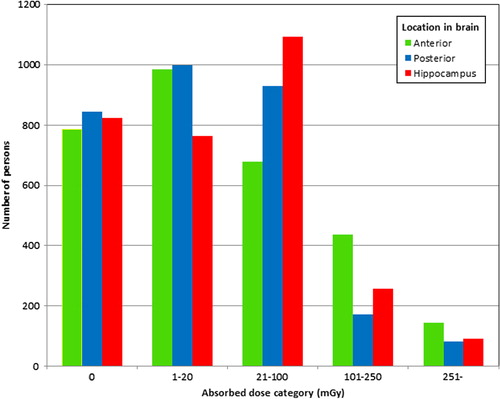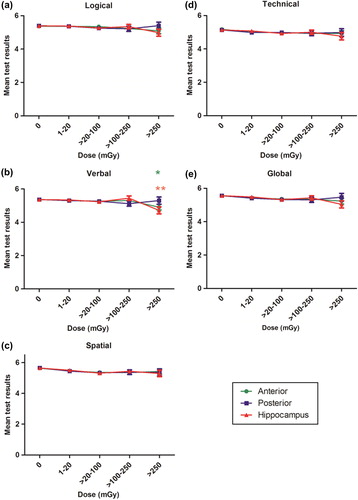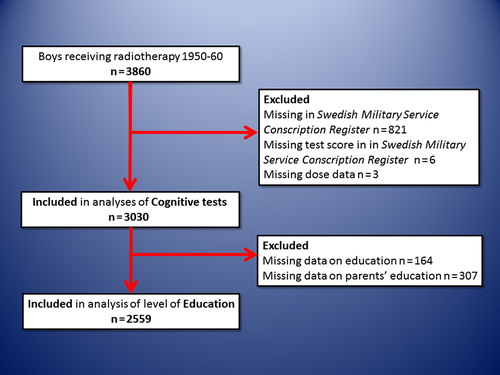Figures & data
Figure 2. For each patient the estimated absorbed dose to the anterior brain, the posterior brain and the hippocampus was calculated. The number of subjects in each dose category (mGy) is shown, separated into the anterior brain (green), posterior brain (blue) and the hippocampus (red).

Table I. Estimated absorbed doses (mGy) to different parts of the brain. Cohort for analysis of military tests as outcome.
Figure 3. Results from the Swedish Military Service Conscription Register Data from the cognitive test for the 3030 subjects, separated into the five dose categories. The results are plotted based on the dose to the anterior brain (green), the posterior brain (blue) and the hippocampus (red). The tests results were adjusted for age at treatment and year of birth. The error bars indicate standard error. (A) Results from the logical test. P for trend: anterior 0.12, posterior 0.79 and hippocampus 0.09. (B) Results from the verbal test. P for trend: anterior 0.02, posterior 0.97 and hippocampus 0.005. (C) Results from the spatial test. P for trend: anterior 0.70, posterior 0.58 and hippocampus 0.35. (D) Results from the technical test. P for trend: anterior 0.45, posterior 0.81 and hippocampus 0.18. (E) Combined results from the four tests, yielding a global score. P for trend: anterior 0.23, posterior 0.91 and hippocampus 0.06.

Table II. Higher education in relation to dose, part of the brain and parents’ education. The numbers represent absolute values and in brackets the proportion of individuals with higher education is shown.
Table III. Odds ratios and 95% confidence intervals of higher education, in relation to dose.

